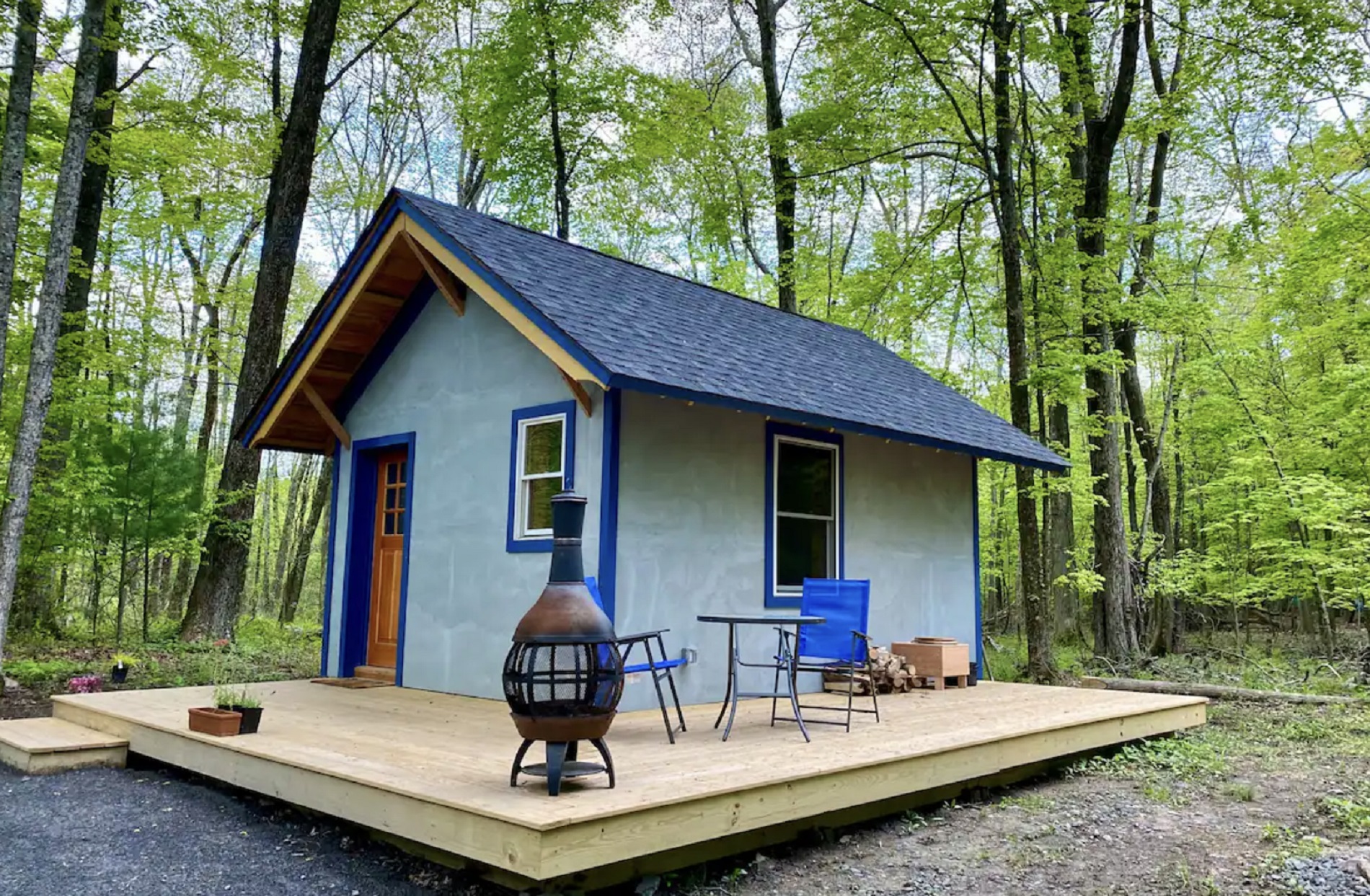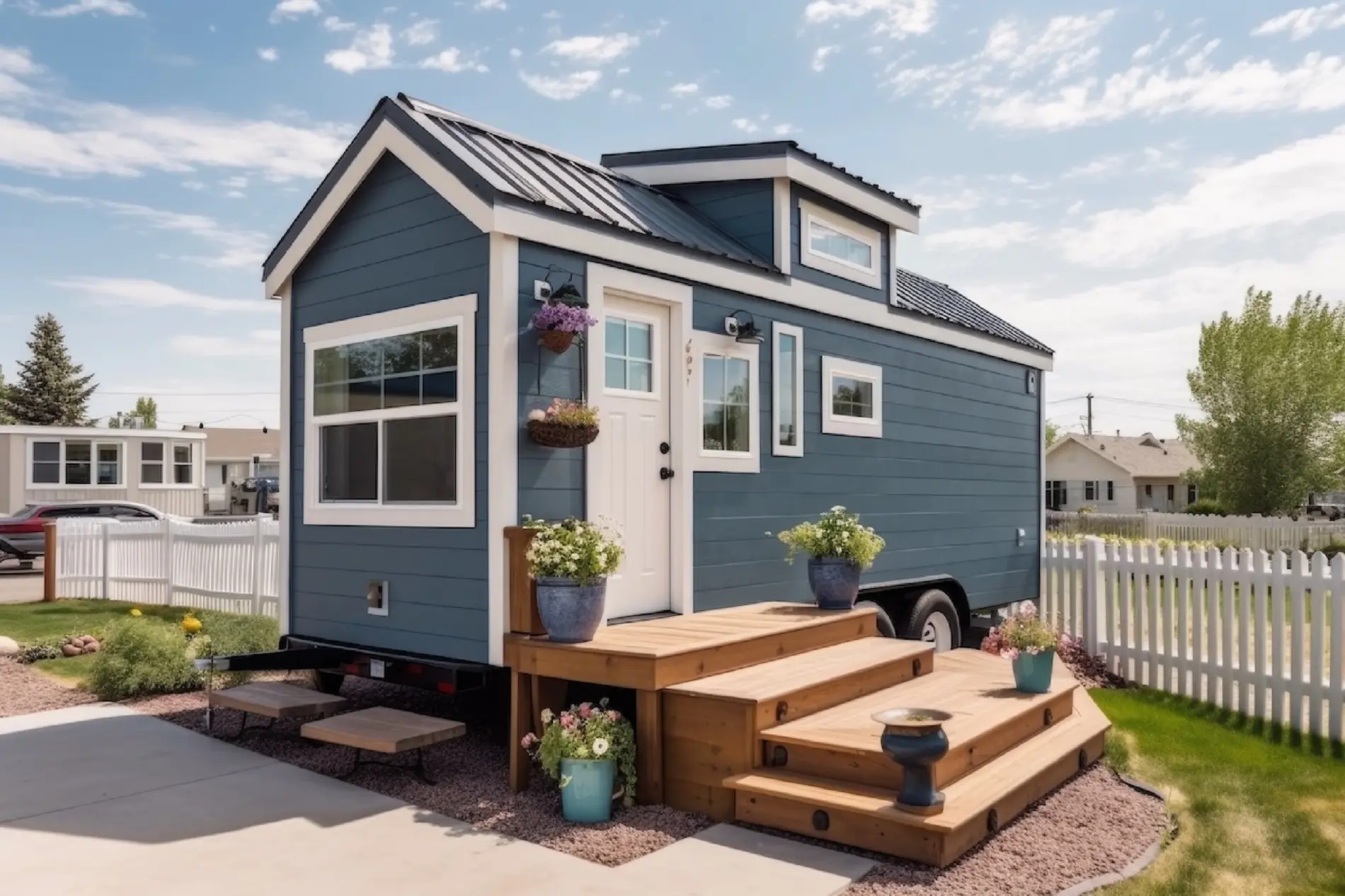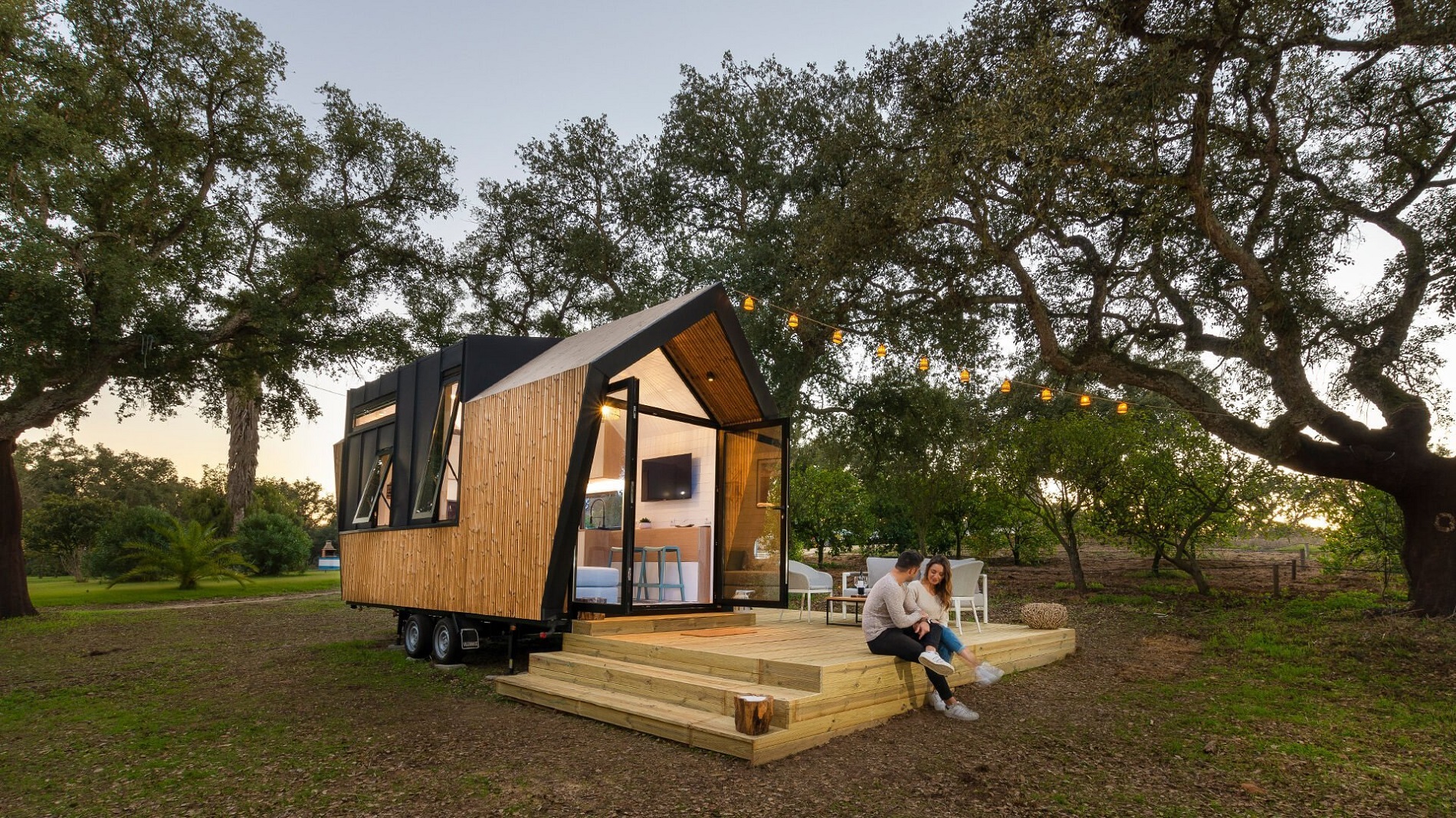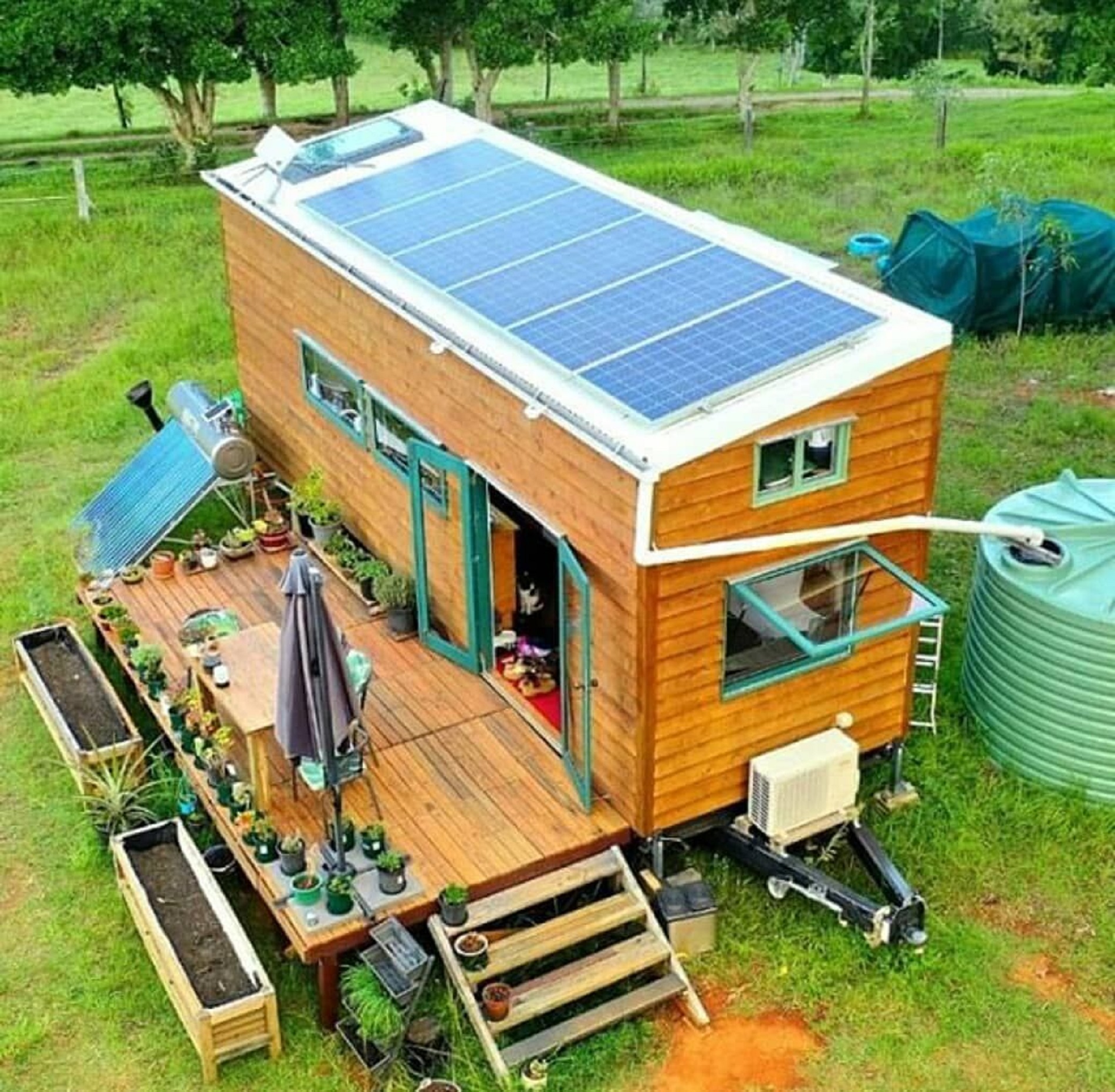A tiny house is exactly what it sounds like – a tiny, often portable house that maximizes living space in a tiny footprint. The average tiny house is between 100 and 400 square feet, compared to the 2,000+ square feet of a typical Australian home. The tiny house movement has been sweeping the nation recently as more people embrace simple living in these pint-sized abodes.
Tiny house living allows you to minimize possessions, reduce environmental impact, and slash housing costs. It symbolizes a growing shift away from materialism and overconsumption.
While tiny houses used to be seen as unusual alternative homes, they are now a popular housing option for everyone, including couples, families, retirees and millennials. There are countless reasons to consider joining the tiny house revolution.
We will explore what constitutes a tiny house, its many benefits, and things to consider if you’re interested in calling a tiny house ‘home’. We’ll cover how to maximize space and storage, go off-grid, customize style and aesthetics, understand pricing, and evaluate if small living is a good lifestyle fit. Read on to learn everything you need to know to decide if tiny house living is right for you!
What Exactly is a Tiny House?
To understand the tiny house phenomenon, let’s define what constitutes a tiny house. While there is some flexibility in specs, a tiny house is generally under 400 square feet. The typical tiny home ranges from 100 to 400 square feet compared to a standard 2,000+ square foot house. Tiny houses are fully functioning homes, just downsized to a tiny footprint. They contain all the amenities of a full-sized house, including a kitchen, bathroom, living space and lofted sleeping area. The interior is laid out efficiently with fold-away furniture, multi-purpose spaces, and hidden storage.
 While tiny houses are small, they are more spacious and customizable than an RV or mobile home. Tiny house owners can select the layout, fixtures, and finishes to reflect their style. They can be modern, rustic, or anything in between. Tiny houses are built on foundations or trailer beds, making them portable. This distinguishes them from RVs that aren’t fixed to a base. Tiny homes can be relocated while offering more living space and amenities than an RV. Their versatility and customizability make tiny houses a popular tiny living option.
While tiny houses are small, they are more spacious and customizable than an RV or mobile home. Tiny house owners can select the layout, fixtures, and finishes to reflect their style. They can be modern, rustic, or anything in between. Tiny houses are built on foundations or trailer beds, making them portable. This distinguishes them from RVs that aren’t fixed to a base. Tiny homes can be relocated while offering more living space and amenities than an RV. Their versatility and customizability make tiny houses a popular tiny living option.
Why Choose a Tiny House Lifestyle?
The tiny house movement has grown exponentially as more people discover the benefits of small living. Here are some of the top reasons to consider joining the tiny house revolution:
Freedom and Mobility
One of the biggest draws of tiny house living is the freedom and mobility it provides. Since tiny houses are portable, you can hitch up and relocate whenever possible. This makes it easy to travel and see new places without sacrificing the comforts of home. Tiny houses free you from the constraints of a fixed traditional house.
Minimalism and Downsizing
Tiny houses force you to pare down possessions and embrace a minimalist lifestyle. The limited space requires you to consider what you need carefully versus what you want. This push towards simplicity can be liberating. Tiny living allows you to focus on life’s essentials and shed the burden of unnecessary possessions.
Financial Benefits
Owning a tiny house can yield significant cost savings versus an average 2,000-square-foot home. Tiny houses have lower building costs, reduced utility and energy bills, lower property taxes, and less maintenance—the average tiny home costs between $ 20,000 and $50,000 to build. Tiny house owners save thousands in the long run.

Sustainability
The small footprint of a tiny house makes it inherently energy efficient. Heating and cooling costs are slashed. Plus, the minimalism aspect means using fewer resources overall. Many tiny homes also utilize solar power. Tiny living has a smaller environmental impact.
Customization and Style
While RVs lack character, tiny houses can be customized with unique styles and finishes to reflect your personality. There are countless design options, including modern, rustic and industrial aesthetics. Tiny houses make small living chic.
Overall, tiny homes represent an opportunity to live freely, intentionally, and sustainably. They provide financial, environmental and lifestyle benefits, making tiny living increasingly popular.
Maximizing a Tiny Home’s Footprint
One of the most significant considerations with a tiny house is maximising functionality within a small footprint, typically 100 to 400 square feet. Careful layout and design are required to make the most of every inch without feeling cramped.
It all comes down to prioritizing needs over wants. No one wants to live in a space without enough room to turn around. Tiny houses maximize floor space as well as storage and facilities. In a traditional 2,000-square-foot home, space can be substituted for storage. However, in a tiny home layout, they must coexist efficiently.
Thanks to clever design, tiny homes feel larger than they are. Queen-sized lofts allow sleeping space without sacrificing the common area. Fold-away tables and chairs create flexible floorplans. Extendable patios function as outdoor living or interior space as needed. Multi-purpose furniture serves different needs. Creative built-in storage makes use of unused nooks and crannies.
 There’s also a reduction in amenities. Can you live without a guest room or basement? Are spare bedrooms sitting empty? If so, a tiny house may work for you. Carefully evaluate wants versus needs and the right size accordingly. The freedom of minimalism outweighs unused space.
There’s also a reduction in amenities. Can you live without a guest room or basement? Are spare bedrooms sitting empty? If so, a tiny house may work for you. Carefully evaluate wants versus needs and the right size accordingly. The freedom of minimalism outweighs unused space.
While tiny living requires adjustment, innovations in design allow comfort and functionality. With thoughtful layouts and convertible furnishings, tiny houses feel open and livable. The focus becomes quality over quantity, emphasizing multi-purpose spaces perfected through ingenious design. In a tiny home, every inch counts.
Living Off-Grid in a Tiny Home
One of the significant benefits of tiny house living is the ability to go off-grid more easily. You can achieve self-sufficiency and simplify life by generating power and disconnecting from public utilities. Here are some considerations for living off-grid in a tiny house:
Benefits
Going off-grid provides freedom from monthly utility bills, allowing you to pocket these savings. It enables sustainable living with a lower environmental impact. And it gives you the flexibility to relocate without relying on connecting to new utilities. Those seeking self-reliance are drawn to off-grid living.
Power Generation
Solar panels are commonly used to harness renewable energy for tiny homes off-grid. Battery packs store any excess generation. Gas-powered generators can supplement during overcast weather. Carefully calculating energy needs ensures the system can sufficiently power a small home.

Water and Waste
Rainwater collection systems with filtration provide off-grid water access. Composting or incinerator toilets allow waste disposal without septic or sewer. Though tiny houses are low-maintenance, these systems require some DIY skills.
With suitable systems, tiny homes allow environmentally friendly off-grid living. The technology makes achieving self-sufficiency realistic, even for novice DIYers. For those keen on a simplified lifestyle, tiny houses offer the perfect opportunity to live off-grid.
Customizing Tiny House Style
One significant advantage tiny homes have over RVs is the ability to customize aesthetics. Since tiny houses are built from the ground up, owners can select design finishes to match their tastes. Tiny houses come in modern, rustic, industrial, and other styles.
Despite their small footprint, tiny homes can reflect the owner’s personality through considered design. Warm wood tones and visible beams create a cozy cottage feel. Sleek lines and glass walls evoke modern minimalism. Exposed ductwork and pipes lend an urban loft vibe. Tiny house tours reveal just how personalized small space style can be.
 Tiny living encourages creativity and thinking outside the box. Within reasonable zoning regulations and planning permits, tiny houses can meet diverse aesthetic needs in a small space. Finding room for all the necessities while also allowing personal flair is challenging. But the tiny design shows that even 100 square feet can feel like your custom home.
Tiny living encourages creativity and thinking outside the box. Within reasonable zoning regulations and planning permits, tiny houses can meet diverse aesthetic needs in a small space. Finding room for all the necessities while also allowing personal flair is challenging. But the tiny design shows that even 100 square feet can feel like your custom home.
While tiny, these homes maximize aesthetics through thoughtful details. Their stylish design contains all the comforts that make a small house feel like a welcoming home tailored to your taste.
Calculating Tiny House Costs
Tiny houses offer significant savings compared to average-sized, traditional homes. But it’s essential to understand various cost factors when researching tiny living.
Upfront build costs for a custom tiny house range from $20,000 to $50,000 depending on size, materials, appliances, and finishes. DIY builds cost less than hiring a contractor. The cost per square foot is generally higher for tiny houses than traditional homes. But tiny living yields ongoing savings from reduced utility and maintenance bills.
Customization also impacts price. Unique styles like industrial or artistic touches raise costs over simple designs. Shipping container conversions into moveable tiny dwellings is an affordable building option. Delivery and utility hookup fees add expenses if relocating the tiny house.
While tiny homes have higher square footage costs, over time, they provide more savings from their efficiency and lower bills. Tiny house residents save thousands in the long run with a minimized lifestyle. The financial benefits attract many people interested in living tiny.
Carefully calculating construction costs ensures you stay within a tiny house budget. Although small, tiny homes allow creative customization that fits your style with less lifetime cost than a standard home.
Is Tiny Living Right For You?
Tiny houses are best suited for specific demographics and lifestyles. Singles, couples, and small families do well in tiny homes. The limited space may be too cramped for larger families.
Tiny houses work as temporary housing during a life transition or while building a larger home. Their portability also makes them ideal for full-time recreational travel across the country. Some use tiny homes as guest houses or vacation retreats.

Empty nesters looking to downsize find tiny living fits this new life stage. With kids grown, they no longer need surplus space. Tiny living frees them from the burden of a home that is too large.
Many young people embrace minimalism and sustainable living. For these demographics, a tiny house ethos makes sense. The pared-down lifestyle aligns with their values.
While challenging for some, those able to live with less find tiny houses a perfect fit. For certain lifestyles, tiny living amplifies rather than constrains life enjoyment through intentional simplicity. The tiny house movement continues rising as more discover an ideal match.
Embrace the Tiny House Lifestyle with Aarons Outdoors
Tiny houses offer freedom, sustainability, and financial savings in a personalized small space. With thoughtful layout and customization, tiny living maximizes the enjoyment of a minimized life. While assessing your needs, remember Aarons Outdoors provides affordable tiny house construction tailored to your lifestyle. Contact us today for a free estimate on building your dream tiny home. As more discover the benefits, the innovative tiny house movement will continue growing. It is now time to join the tiny house revolution with the help of Aarons Outdoors.





